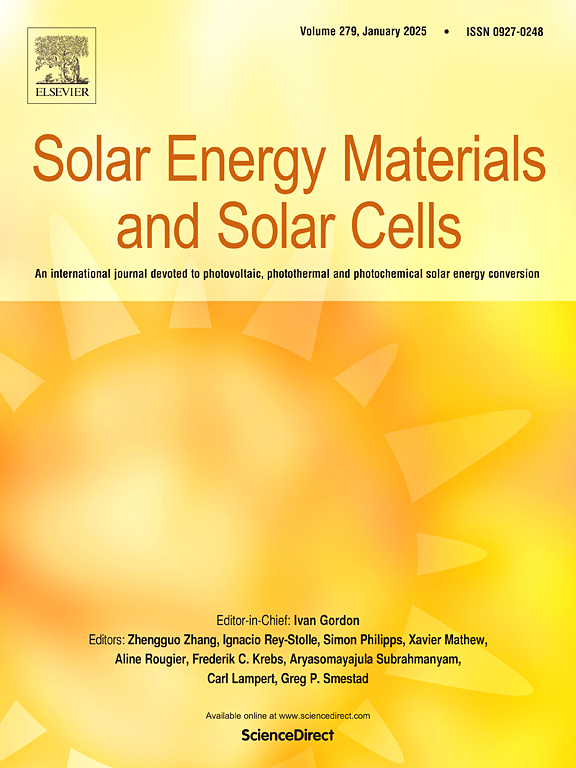Electrical and optical characterizations and modeling of bifacial photovoltaic mini-modules integrated into solar air heaters
IF 6.3
2区 材料科学
Q2 ENERGY & FUELS
引用次数: 0
Abstract
Solar energy is a sustainable substitute for fossil fuels that have an undesirable environmental impact in addition to the danger of depletion. Despite their potential, conventional solar air heaters (SAHs) are limited to thermal applications and suffer low efficiency due to heat loss and design constraints. Photovoltaic-thermal (PVT) systems, which simultaneously generate electricity and heat, offer a promising alternative. This study investigates the integration of bifacial photovoltaic (PV) minimodules into SAHs, with the aim of enhancing their performance and expanding their functionality. The objective of this work is to compare the optical and electrical performance of SAHs integrated with a bifacial PV mini-module in comparison to conventional SAHs with glass only. The methodology adopted is based on experimental optical and electrical characterizations in different wavelength ranges. The results reveal that 80.79% of the incoming irradiance reaches the absorber plate in conventional SAHs with glass only, while the rest is lost due to reflection and absorption. However, in SAHs with PV mini-module, 26.09% of the irradiance reaches the absorber plate, 54.53% of the total energy is absorbed in the PV cell contributing to electricity (10.53% is harnessed as electricity in the 300–1200 nm wavelength range) and heating (44.00%) generation, 10.11% of the total energy is absorbed in the surroundings of the PV cell, and the remaining 9.27% is lost due to reflection. These findings shed light on the intricate energy distribution and utilization within PV mini-modules when integrated into SAHs. More importantly, this study establishes a foundation for the design and optimization of efficient PVT-SAH systems in future research and development efforts.
求助全文
约1分钟内获得全文
求助全文
来源期刊

Solar Energy Materials and Solar Cells
工程技术-材料科学:综合
CiteScore
12.60
自引率
11.60%
发文量
513
审稿时长
47 days
期刊介绍:
Solar Energy Materials & Solar Cells is intended as a vehicle for the dissemination of research results on materials science and technology related to photovoltaic, photothermal and photoelectrochemical solar energy conversion. Materials science is taken in the broadest possible sense and encompasses physics, chemistry, optics, materials fabrication and analysis for all types of materials.
 求助内容:
求助内容: 应助结果提醒方式:
应助结果提醒方式:


